The Maiden, Mother, And Crone: The Three Stages Of Womanhood
If you’re looking for positive female representation, look no further than ancient mythological archetypes.
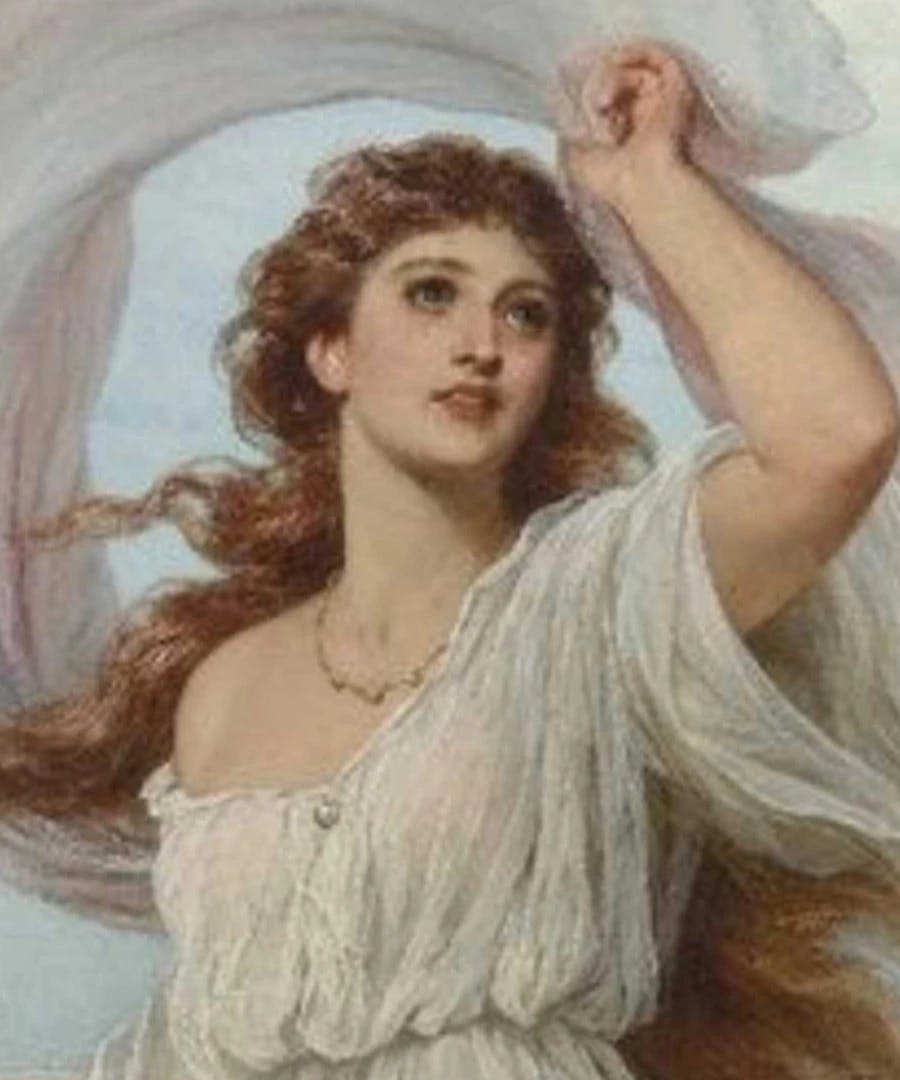
Archetypes are universal symbols and images that represent a familiar Being. An archetype we’re all familiar with is that of the hero. No two heroes are exactly alike; our own unique experiences and perspectives shape our own version of the hero archetype. However, we can likely agree on various traits and qualities which belong to the hero.
Joseph Campbell's Hero Archetype
Joseph Cambell, in A Hero with a Thousand Faces, explores the hero archetype and the monomyth of "The Hero's Journey." Campbell writes, “Whether the hero be ridiculous or sublime, Greek or barbarian, gentile or Jew, his journey varies little in essential plan. Popular tales represent the heroic action as physical; the higher religions show the deed to be moral; nevertheless, there will be found astonishingly little variation in the morphology of the adventure, the character roles involved, the victories gained.”
The hero is courageous. He leads a moral life. He does what is good and right, and sacrifices himself for the greater good. The hero departs from the comfort he knows to conquer the unknown. He faces various tests and trials to determine if he is really cut out to be a hero. He confronts and conquers the most dangerous and terrifying aspects of Being. He emerges victorious, thus returning to his previous life of comfort as a changed man. As a hero.
In recent years, Canadian clinical psychologist Jordan Peterson popularized the hero archetype and the hero's journey, specifically bringing to light the hero's relationship with Order and Chaos. The hero must leave behind a life of order to conquer chaos, returning to the previous life he knew as a balance of both. Symbolically, Order is masculine and Chaos is feminine.
While the hero is the archetypal ideal for men, women have a different journey. Although feminists insist on inserting women into masculine roles in film and media, the hero archetype is reserved for men. I’m not resistant to woman as a hero because of internalized misogyny or resistance to social progress, but rather because women already have a vital role to play, and their very own archetypes to go along with it. There are infinite feminine archetypes for women to identify with, however, there are three in particular that symbolize the chronological stages of womanhood: the Maiden, the Mother, and the Crone.
The Three Feminine Archetypes and Their Symbolism
The Triple Goddess, also known as the Maiden, Mother, and Crone, is an ancient deity archetype present in mythologies around the world. The Triple Goddess is a triunity of three distinct aspects united into one being. You’re likely familiar with the concept of three distinct persons sharing one essence from the Christian tradition, but it’s also found in pagan religions.
The triunity of the Triple Goddess can be represented by several different figures. Examples from Greek mythology include the Moirai (Fates), who spin, measure, and cut the thread of human life, the Horae (Seasons, of which there used to be three), and the Charities (Graces), three goddesses of charm, beauty, nature, creativity, goodwill, and fertility. Each archetype may also be represented in individuals, such as Persephone as the Maiden, Demeter as the Mother, and Athena as the Crone.
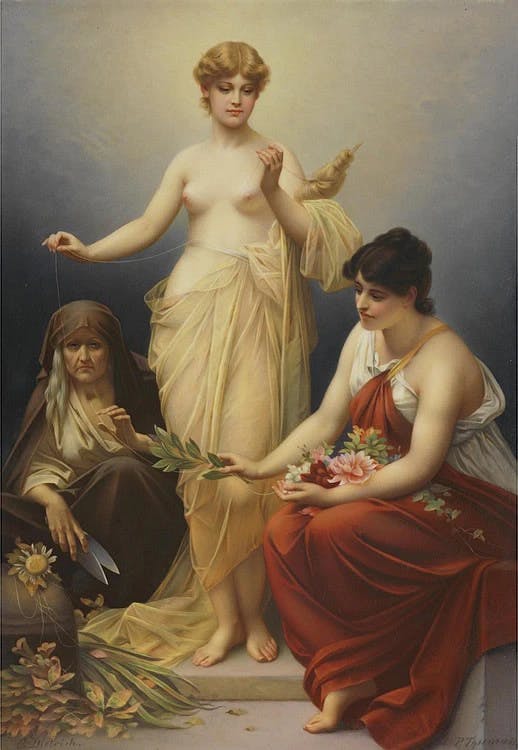
“The Three Fates” by Paul Thumann, 19th century. Public domain.
The Maiden/Mother/Crone archetypes correspond with the changing seasons – the Maiden as spring, the Mother as summer, and the Crone as fall/winter. This archetype also corresponds with the lunar cycle. The Maiden is the waxing moon, the Mother is the full moon, and the Crone is the waning moon. This completes the lunar cycle, thus completing the woman’s life cycle.
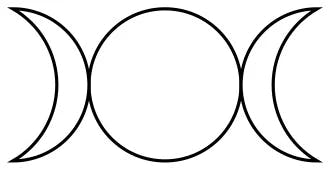
Waxing, full, and waning moon.
Who Is the Maiden?
The Maiden is the young woman archetype. She represents beauty, youth, purity, naivety, and fertility. Curiosity fuels the Maiden. Considering that she has her entire life ahead of her, her opportunities in the world are endless. She is independent and learning to embrace her femininity. She “follows her bliss” in the sense that she pursues self-discovery, and she explores her interests without prematurely committing to a skill or life path. This isn’t to be confused with the modernist-feminist understanding of “finding yourself,” which typically leads to selfishness and corruption.
She represents the waning moon, the moon as it travels from dark to full. The Maiden is the bud of womanhood. She is spring. Persephone, queen of the underworld in Greek mythology, is also known as “The Maiden.”
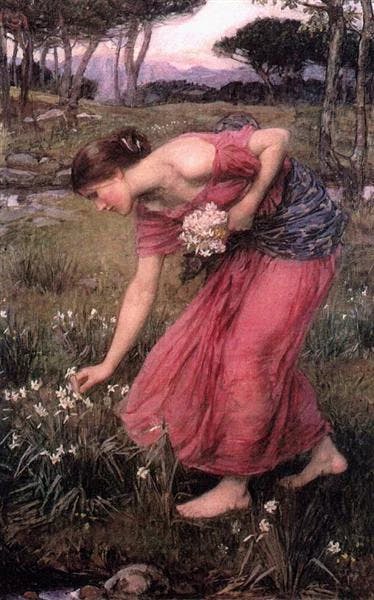
“Persephone” by John William Waterhouse, 1912. Public domain.
This stage of a woman’s life mirrors that of the departure of the hero. Campbell writes, “This first stage of the mythological journey – which we have designated the ‘call to adventure’ – signifies that destiny has summoned the hero and transferred his spiritual center of gravity from within the pale of his society to a zone unknown.”
The Maiden is a virgin, not just in the literal sense, but also figuratively as she is untamed and unowned. She revels in chaos and remains free and independent. But her freedom isn't without risk and consequences. Her naivety and innocence mean she is vulnerable to the dangers of the outer and inner worlds. She is susceptible to tyranny, which occurs when Order exists without the balance of Chaos.
The Maiden Persephone
Clarissa Pinkola Estés, author of The Women Who Run with the Wolves: Myths and Stories of the Wild Woman Archetype, writes of the Maiden: “The maiden represents the heartfelt and formerly sleepy psyche. But a warrior-heroine lies beneath her soft exterior. She has the endurance of the lone wolf. She is able to bear the dirt, grime, betrayal, hurt, loneliness, and exile of the initiate. She is able to wander the underworld and return, enriched, to the topside world."
This final sentence of this quote refers to the Maiden Persephone and the myth of her abduction. One day, while picking flowers, Hades (god of the Underworld) rises through a cleft in the Earth and kidnaps Persephone, taking her into the underworld as his bride. Persephone’s mother Demeter, the patroness of agriculture, forbids the Earth to produce in her grief, causing a mass famine. In response to the cries of the people, Zeus demands Hades to return the Maiden to her mother. But on her way to the topside world, Hades tricks Persephone into tasting the fruit of the Underworld. From then on, she must remain in the underworld as Hades’ bride during each winter season, reuniting with her mother in the topside world come spring.
This story illustrates the vulnerability of the Maiden; when left to her own devices, (without the wisdom of a Crone or a Mother, or the protection of a father) tyranny swallows her whole. But Persephone's journey to the underworld serves a purpose; she wanders the underworld (a metaphor for facing the darkest parts of the psyche) before emerging to the topside world refreshed each spring. This is the life/death/rebirth cycle common to all great heroic tales. This myth is also an explanation for the seasons; Demeter forbids the Earth to produce while her daughter is in the underworld (causing winter), but allows the harvest to prosper when Persephone re-emerges (causing spring).
The Myth of Artemis and Actaeon
The value of the Maiden can perhaps be best understood through the myth of the Greek goddess Artemis (Roman Diana) and Actaeon. As the story goes, the hunter Actaeon stumbles upon the bathing scene of the chaste goddess Artemis and her escort of nymphs, where he witnesses Artemis naked and bathing. Artemis considers this to be a great transgression of her chastity, and in response, she turns Actaeon into a stag for his own hunting dogs to hunt down and kill.
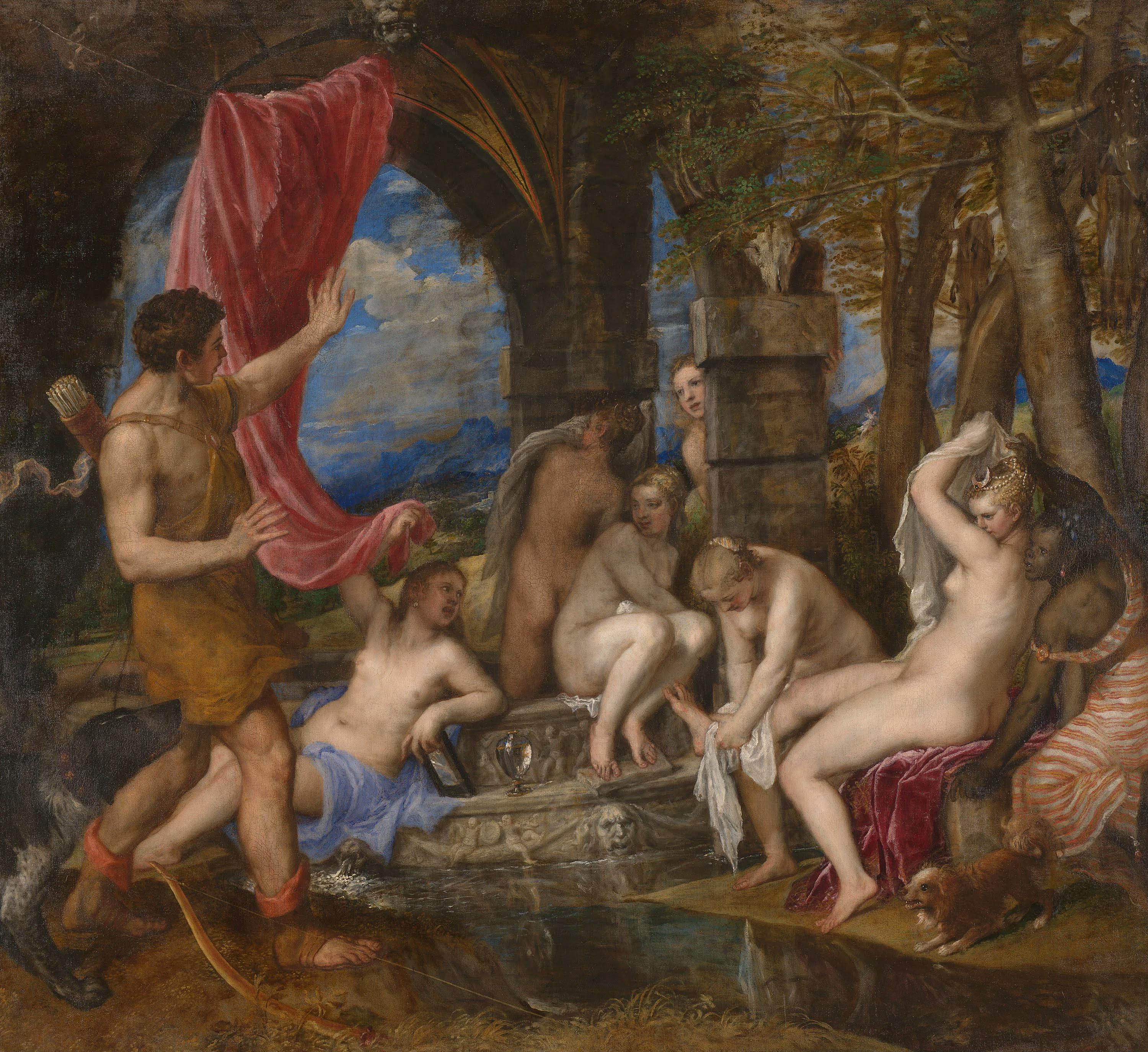
“Diana and Actaeon” by Titian, 1556–1559. Public domain.
Much can be said about this myth and its themes of desire, idolatry, and purity. But focusing on purity, the virgin goddess's chastity was so precious and sacred to her, that even a glance at her offended this, an offense deserving of death. She had a right to bathe nude and have her chastity respected. Actaeon did not respect this, thus paying for it with his life.
The Fallen Maiden
Some aspects of the Maiden archetype remain valued in modernity. But how far we have stumbled from the Maiden's true value. The fallen Maiden's value remains solely her outer beauty, which must be commodified to be of any use to the modern world. From cosmetics to plastic surgery to anti-aging products – these industries are dedicated to keeping women chasing the illusion of perpetual Maidenhood, despite a greater purpose existing beyond it. Beauty is an eternal value, but it’s fleeting in a woman’s material Being.
The issue of the modern Maiden is paradoxical – while women will seemingly do anything to remain a forever Maiden visually, young women are eager to forgo the pure side of Maidenhood in favor of being an Aphrodite-esque sex symbol. With the influence of media messaging and a hypersexualized culture, young women are now eager to exit Maidenhood in favor of being a sex symbol through the means of Instagram, casual sex, and in severe cases, prostitution or OnlyFans. Virginity is invaluable; however, modern women and girls have been tricked into believing that it's an itch to scratch or an obstacle in their way. Her purity and innocence are no longer perceived as a virtue but as a hindrance to her success as a human being. She doesn't value her body like Artemis.
But unlike Artemis, no mortal Maiden can remain a Maiden forever. So what happens when she ages and her beauty fades? Where then, does her value lie?
Reclaiming the Maiden Archetype
Even if you are past the Maidenhood stage of life, there are still ways to cultivate elements of it. This includes healthy lifestyles, choosing skincare over cosmetics, and guarding the heart and mind against damaging consumption. The Maiden must follow Artemis's lead in her approach to who she allows access to her body. This means not only sexually but also in the way in which she shares herself with the world visually and emotionally.
The Maiden must follow Artemis's lead in her approach to who she allows access to her body.
If you know a young Maiden, assure her that despite what mainstream culture might indicate, her value doesn't reside in how many likes she can get on Instagram or what her body can do for men. Maidenhood is a beautiful part of being a woman that escapes us quickly; there's no need to exit it prematurely, especially in a way that's destructive to a woman's well-being. It's an exciting but vulnerable part of a woman's life that needs to be protected and cultivated to move gracefully to the next stage: motherhood.
Who Is the Mother?
As the woman exits Maidenhood, a stage of independence, curiosity, and Chaos, she enters Motherhood. The Mother archetype is the nurturer. She is self-sacrificing. She represents fertility and unconditional love. She cares for her offspring and would protect them by any means necessary. She corresponds with the full moon and the season of summer. The Mother is a woman in full bloom.
The Mother archetype corresponds with the part of the hero’s journey called initiation. Campbell writes, “[The] hero moves in a dream landscape of curiously fluid, ambiguous forms, where he must survive a succession of trials.” If I may, I will replace a few words in the previous sentence and repeat it: The mother moves in a dream landscape of curiously fluid, ambiguous forms, where she must survive a succession of trials. I think it still stands true.
In this stage, a woman unifies herself with a man and bears his children. Here, she may also find herself identifying with Aphrodite (the lover archetype). This part of a woman's life is about finding meaning in service to others. She attaches herself to her lover and the beings she grows in her womb. Her Being is no longer isolated in her own identity but expands to include her relations with others. The Mother may struggle to find time for herself, as her children consume her life – but this is a season of life she must accept and submit to.
Demeter and the Abduction of Persephone
The Mother is represented by the goddess Demeter, who presides over agriculture, farming, and vegetation, and guarantees the fertility of the Earth. Revisiting the abduction of Persephone, Demeter’s reaction to her missing daughter illustrates the devotion of the Mother archetype. In her grief, Demeter forbids the crops to grow to feed the people. She refuses to lift the curse on the land until her daughter is released from the Underworld.
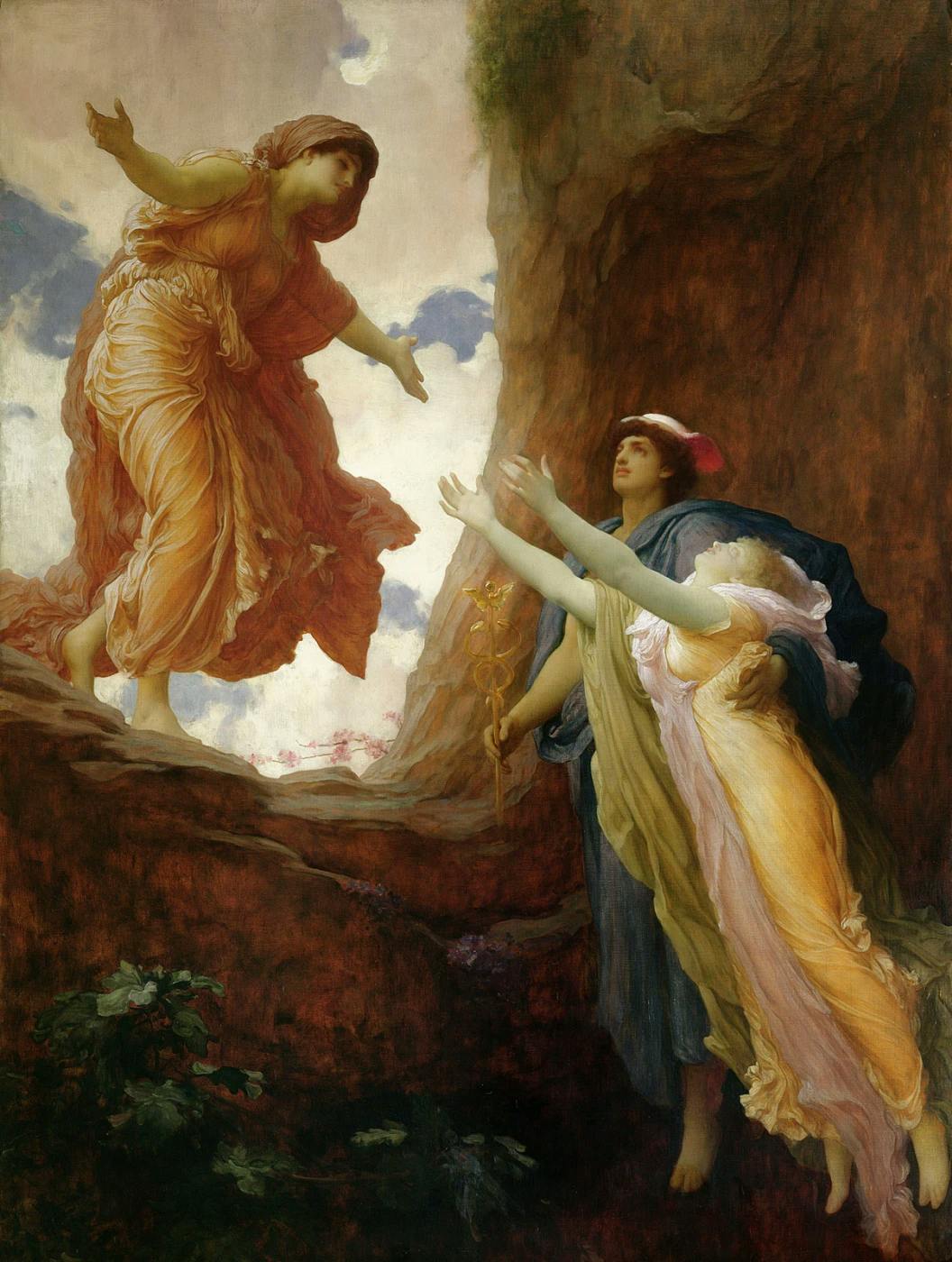
“The Return of Persephone” by Fredric Leighton, 1891. Public domain.
This story illustrates the role the Mother plays and the obligation she has to her children. Demeter sacrifices feeding all the people in the land (including herself) for her one daughter. The Mother's protection is a force to be reckoned with. Without the balance of masculine reason, this force is destructive. But nonetheless, it illustrates the devotion of the mother to her children, and the preference and prejudice she has for her own offspring.
Discouraged Motherhood
If you look around, it’s not hard to miss the discouragement of motherhood. Rampant media messaging – from pro-abortion activism to widespread birth control use to environmentalist anti-natalism propaganda – encourages women to delay or avoid motherhood altogether. Women are hit over the head with the idea that children will ruin their lives and bodies. We've even reached a point in the discussion where regret of motherhood is acceptable public discourse.
The paradox of the feminist anti-motherhood campaign is that while motherhood is discouraged and declining, women are still meeting their maternal needs and desires through other means. The rise in the dog mom, cat mom, and plant mom phenomenon is a testament to that. Despite feminist messaging and independent lifestyles, women still find meaning in caring for things other than themselves. Perhaps this is an indicator of the biological roots of maternal instincts.
Reclaiming Motherhood
How can we reclaim Motherhood as an intrinsic aspect of the feminine being? Firstly, we must accept Motherhood as a role that is good, desirable, and in alignment with our biology. It’s imperative that we do not lie to ourselves and to the women in our lives about the reality of our biology and the timeline that we face as women. Because once we've missed this stage, it's gone; there's no getting it back. We need to prioritize our lives around this biological fact rather than the cultural messaging that exists in conflict with our biology.
The rise in the dog mom, cat mom, and plant mom phenomenon is a testament to how women are meeting their maternal needs.
Positive and honest motherhood discourse that is devoid of feminist rhetoric is immensely useful for reclaiming this archetype. For this, you can look no further than the plethora of Evie articles promoting the joy of motherhood and the meaningful journey that it brings. Positive motherhood messaging is important to counteract the negative taint of motherhood portrayed in the media.
Even if a woman doesn’t have biological children herself, whether by choice or by uncontrollable circumstances, there are other means by which a woman can pursue and fulfill the need for maternal development: adoption, foster care, community involvement, or childcare work, to name a few options. For some, it might mean an early start as a Crone, which could provide excellent spiritual development or make an even greater stamp on the people and community around you through your commitment to the pursuit of wisdom, rational being, and excellence in skill.
Who Is the Crone?
We have reached the final stage of womanhood: the Crone. The Crone is the archetype for the wise old woman. A woman may have arrived at Cronehood from one of a few paths. Her children may have grown up and left the nest. Her husband may have died, leaving her a widow. Or perhaps, by unfortunate circumstances or by choice of her own, she never found a man to partner with. Or maybe she did but never bore children. The Crone is fall/winter, and the waning moon. She is preparing for her descent into darkness. If she has fulfilled her life's work and meaning, she will embrace this with ease rather than fear. She possesses the elusive "women's intuition.” Greek goddess Athena (Roman Minerva) is a Crone archetype.
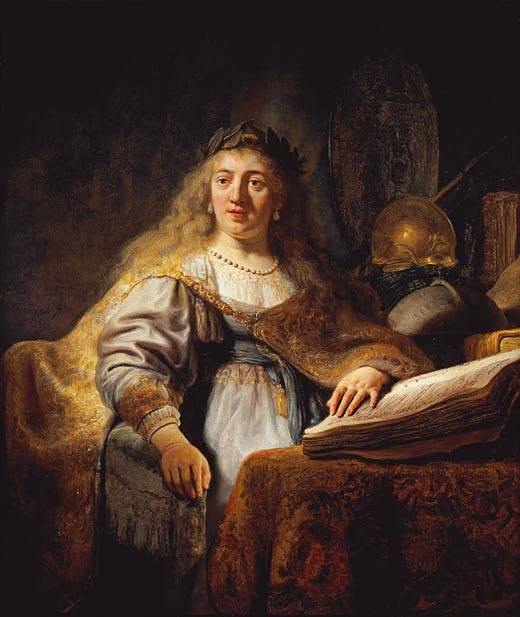
“Minerva” by Rembrandt, 1635. Public domain.
Interestingly, almost all female mammals die post-childrearing once their young are grown, but not human females. This is what’s known as The Grandmother Hypothesis, which is a hypothesis to explain the existence of menopause. It suggests that grandmothers (post-menopausal women) are of use to their kin because they can direct their energy towards the youngest of their kin, thus ensuring the survival of their genes through the younger generation.
This stage of a woman’s life mirrors that of the return of the hero. Campbell writes, “The return and reintegration with society, which is indispensable to the continuous circulation of spiritual energy into the world, and which, from the standpoint of the community, is the justification of the long retreat, the hero himself may find the most difficult requirement of all.”
The hero isn’t finished with his journey upon initiation, and the woman post-motherhood is no exception. As the hero faces the difficult or possibly impossible challenge of sharing his enlightenment with the material world, the Crone must generously share the wisdom she has gained through a lifetime of experience and knowledge with her people.
Athena, the Goddess of Wisdom and Handicraft
The Greek goddess Athena is a personification of the archetype of the Crone. Athena was particularly known as the patroness of spinning and weaving. The owl, an ancient symbol of wisdom, accompanies her. Her three main domains – wisdom, handicraft, and practical reason – are those which belong to the Crone archetype. She is known for protecting heroes, the city, and civilized life. She also presides over warfare, which indicates a superior philosophical mind, demonstrating her exceptionality as a woman.
In mythology, wisdom is typically personified as the feminine, whereas knowledge is personified as the masculine. The Crone archetype is wise because she learns from her own mistakes or the mistakes of others. Ego aside, she faces the difficult facts of life head-on, controlling her emotions while exercising her rational mind. She guides the Maiden in her naivety, and she aids the Mother in childrearing. This wisdom is reserved for the Crone archetype because it takes a lifetime to develop.
She is a master of handicraft. The Crone archetype, as her children have left the nest or perhaps she's become a widow, has time and the qualities of patience and dedication required to develop a mastery of a skill or a set of skills. This is likely a skill that is useful to her people such as sewing, cooking, or gardening. Or perhaps it’s an intellectual or artistic pursuit. She can thus pass down her mastery of skill to future generations.
Animus Integration
The Crone is known for her abilities in practical reason, which is typically a trait associated with the masculine. Athena wasn't born from the mother's flesh but instead sprang from her father Zeus's head as a full-grown woman. Such is the case of other goddesses who were born from man, such as Aphrodite. This birth is a metaphor for the divine greatness the women possess that cannot be contained in the human flesh.
Being sprung from the head illustrates her ability for practical reason. In Jungian psychology, this integration of masculine energy is what is referred to as the animus. The animus is the archetype that expresses the masculine qualities within a woman.
Estés describes the woman with a poorly developed animus: "[She] has lots of ideas and thoughts but is unable to manifest them in the outer world. She always stops short of the organization or implementation of her wonderful images." This is the Maiden. She has a rich inner world but is unable to implement her ideas without Order. The Crone, however, has both: "Animus can best be understood as a force that assists women in acting in their own behalf in the outer world. Animus helps a woman put forth her specific and feminine inner thoughts and feelings in concrete ways."
The animus helps a woman put forth her specific and feminine inner thoughts and feelings in concrete ways.
Animus integration is what sets the Crone apart from the other feminine archetypes. It takes the woman from the sparkle in her eye Maiden, blinded by all the world's possibilities, to the wise woman with creative ideas accompanied by a strong handle on the concrete world. Unlike her younger counterparts, the Crone is able to make good judgments free from ego investment and untamed emotions, and she is capable of standing her ground against tyranny.
The Crone Is Devalued in Society
Older, post-menopausal women are often invisible in modern society. Not only because her beauty and fertility have faded, but also because her gifts aren’t useful in a materialist society devoid of meaning. The gifts, wisdom, and guidance the Crone has to offer aren't as valuable because these aren't useful to younger women in pursuit of a superficial and hedonistic individualist lifestyle.
The feminist paradox of the Crone archetype is that while feminists demand to be respected and be known for more than their beauty, they complain when their time has passed for men to trip over themselves in awe of their physical appearance. As a woman, it’s crucial that your entire value does not rest in your outer beauty. Because once that inevitably fades, what does she have left?
When a woman continuously fulfills her life's purpose, the prospect of her diminishing beauty doesn't pose a threat to her value as a woman. Youthful, fertile beauty isn’t everything. When a woman has immeasurable value that stems deeper than her outer beauty, and she has devoted her life to serving and caring for her people and the family she created, the meaning her Being brings to the world doesn't have an expiration date.
Reclaiming the Crone Archetype
Although the Crone is the culmination of a woman's life cycle, it doesn't begin there. Becoming a Crone begins at the earliest stages, as a woman gains experience and knowledge for wisdom. She isn't born into a mastery of skill, wisdom, and reason like Athena. She must pass through the stages of Maidenhood and Motherhood, making mistakes along the way, falling off the beaten path, or even choosing the road less traveled to find her way to elusive feminine intuition and wisdom.
This completes the feminine cycle: the woman began as a Maiden, focusing on herself, traveling into the underworld. She became comfortable with the depths of her psyche and unconscious. She used her independence to imagine the possibilities for her life. The Maiden was then initiated into Motherhood. In this stage, she sacrificed herself for her offspring, and she found meaning in service to others. The conclusion to the woman’s life cycle is the Crone; coming full circle and sharing the wisdom she has gained. She completes the feminine journey.
Closing Thoughts
Joseph Campbell said, “A hero is someone who has given his or her life to something bigger than oneself.” This is the crux of the meaning behind the Maiden/Mother/Crone feminine life cycle.
These archetypes are ideals; while we can never reach perfection, these ideals provide inspiration for women looking to achieve excellence and find meaning in their lives.
Love Evie? Let us know what you love and what else you want to see from us in the official Evie reader survey.